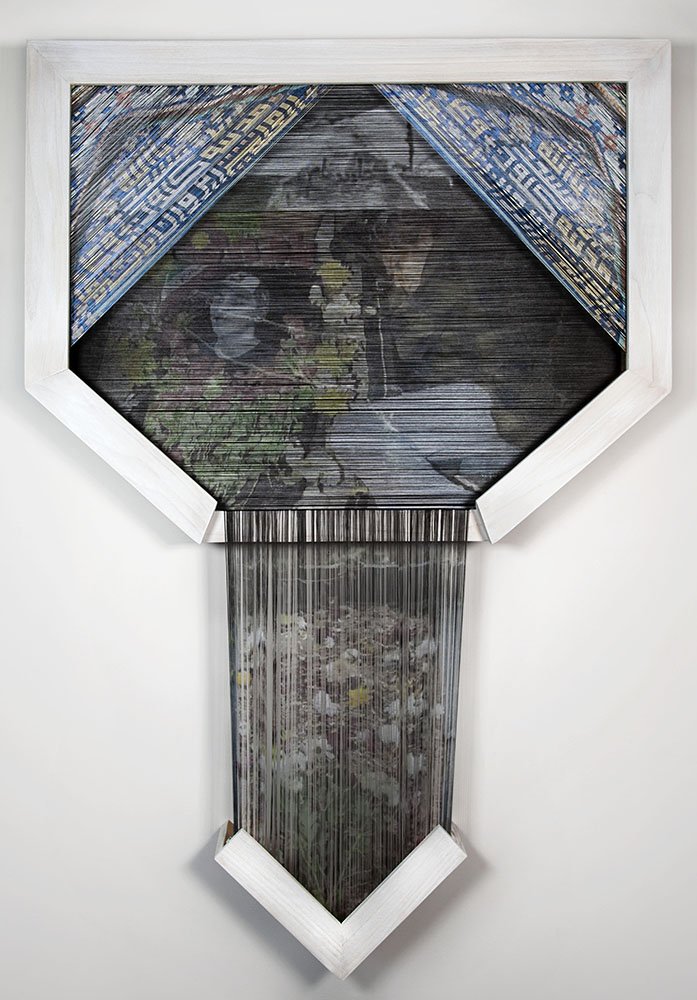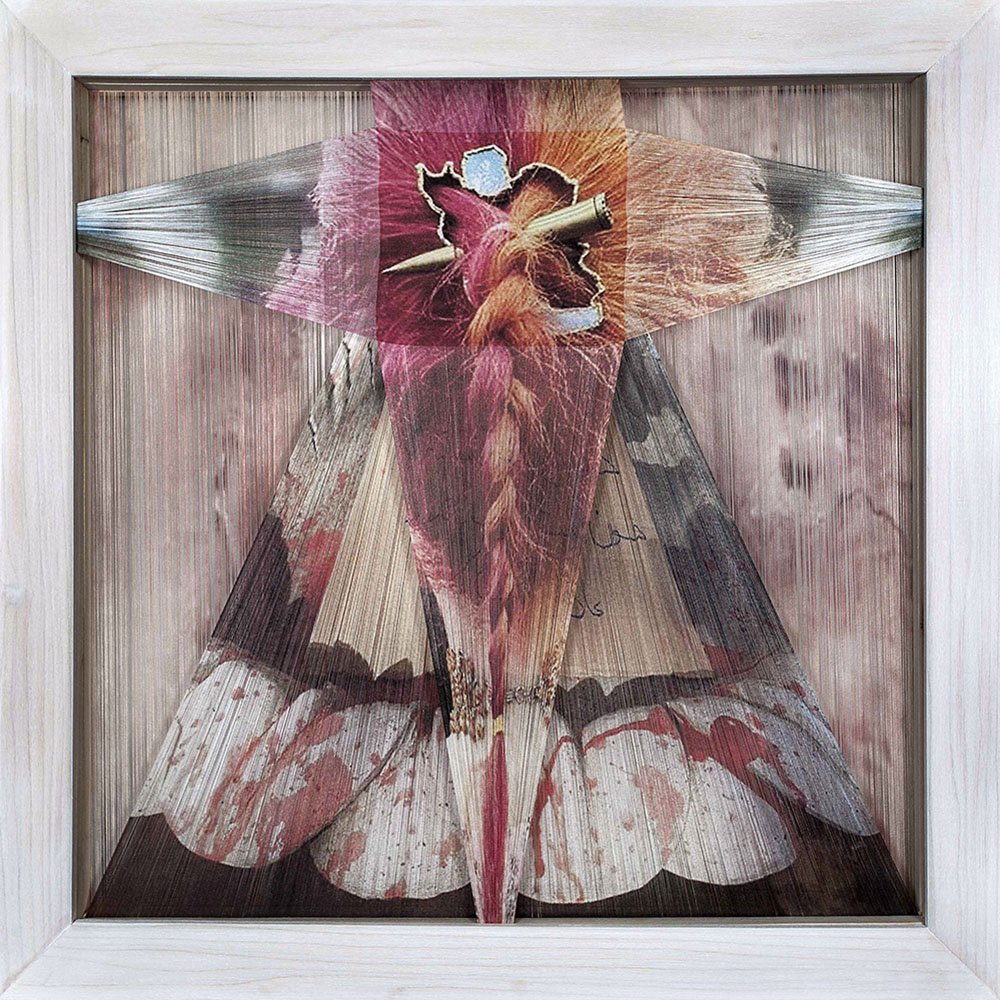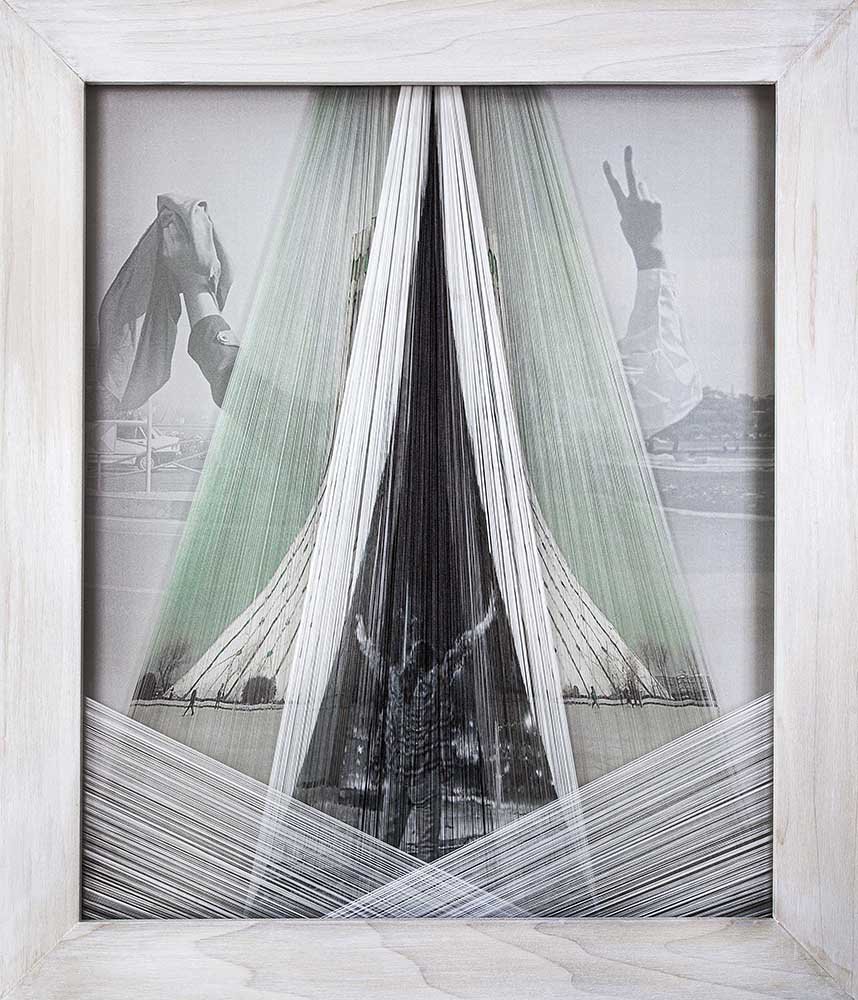Mona Bozorgi
Threads of Freedom
HCP Fellowship Recipient Exhibition
December 12, 2024 - February 9, 2025
Opening Reception
Thursday, December 12, 2024 - 6-8pm
© Mona Bozorgi
Threads of Freedom intertwines materials and narratives in photography to question traditional representations of women in Iran. This project shares stories of Iranian women using the photographs they have taken of themselves during the recent uprising and protests in the country. At the time, photographers were prohibited from documenting the uprising, and many who tried to take photographs were arrested. So, selfies became a way to document and resist. Women photographed themselves while removing and/or burning their headscarves in public to show defiance and to reclaim the spaces that had been stolen from them for almost a half-century.
I conceived this project and its process as a form of protest, a way to resonate with the struggle. Residing outside my country and unable to participate in protests, I found myself overwhelmed and empowered by the images of young, brave women. I collected and printed their images on silk and dismantled the fabric by removing individual threads by hand. Then, I layered the images to create new compositions and to reveal and connect the stories embedded in each photograph. Throughout history, fabric was utilized to simultaneously conceal, beautify, and objectify women's bodies. In Iran, women's bodies and hair have been veiled with fabric for centuries. In Threads of Freedom, fabric becomes a surface that reveals women's bodies instead of covering them, and the threads of the fabric reweave their shared stories. The work acknowledges that the people's history will remain despite the state's attempts to censor or erase it.



About the Artist: Mona Bozorgi
Mona Bozorgi is an artist-scholar whose interdisciplinary research and artistic practice explore the correlation between representation and performativity in photography. Bozorgi's artistic practice is intertwined with posthuman critical theory and focuses on the materialization of bodies and how it affects the construction and production of identities. As an Iranian-born artist, her work confronts historical exclusions based on gender and provides alternative ways of understanding the contemporary self. Bozorgi's recent work blends photography, textiles, and installation, troubles the traditional view of photographs as flat objects, and demonstrates the entanglement between the materiality of photographs and their meanings. Her work has been exhibited in numerous museums and galleries in the U.S. and internationally. Bozorgi is an Assistant Professor of Photography and the head of Photography and Moving Image area in the Department of Art at Florida State University.
Questions?
For questions about this exhibition, please contact Exhibitions
Exhibitions and Programs Coordinator, exhibits@hcponline.org or 713-529-4755, ext 16.
Juror’s Statement: Liz Wells
Silk, woven from the fine threads of silkworm cocoons, was first sourced in East Asia. It became a luxury fabric in high demand, also a trading currency. The ‘Silk Roads’, dating from pre-Roman times, were networked routes linking Asia, Africa and Europe, within which Persia - now Iran - was a major trade centre.
Threads of Freedom draws on Mona Bozorgi’s experience as an Iranian-born woman (based in America since 2015). Women have often been associated with textile fabrication as spinners, dyers and weavers, hence, for Bozorgi, the link with gender politics, including tensions over women’s hair being visible in public, and the multiplicity of stories threaded within women’s identity.
Photography has been popular in Iran since first introduced in the 1840s. However, Islam tends to avoid figurative imagery; hence there is a parallel tradition of geometric symbolism in art and architecture as well as in design and fabrication. For instance, triangles symbolise balance and harmony. The triangles in her work thus reference Islamic culture, from which her complex and sophisticated exploration of ideas emerges.
Questions of autonomy, liberty and identity are central to ‘Fruits of Defiance’. Yet the imagery is subtle and ambiguous. Maybe the threads cascading down from ridges of authority, obscuring body parts, represent dominance. Conversely, framed triangular depictions of fire, a stone and a hand perhaps form the base of an arrow pointing upwards, challenging hierarchies. The layered images within the iconography of a ‘Wreath’ likewise resonate symbolically. The eight ‘petals’ that form the installation each reference visits to graves by family members of those killed in recent protests, now affectively memorialised by laying flowers and circulating photos from the cemeteries via social media.
The HCP annual fellowship award acknowledges the integrity of Bozorgi’s, research and artistic experimentation, and the project’s contemporary relevance.
Reference: Peter Frankopan (2015) The Silk Roads, a new history of the world. London and New York: Bloomsbury.

